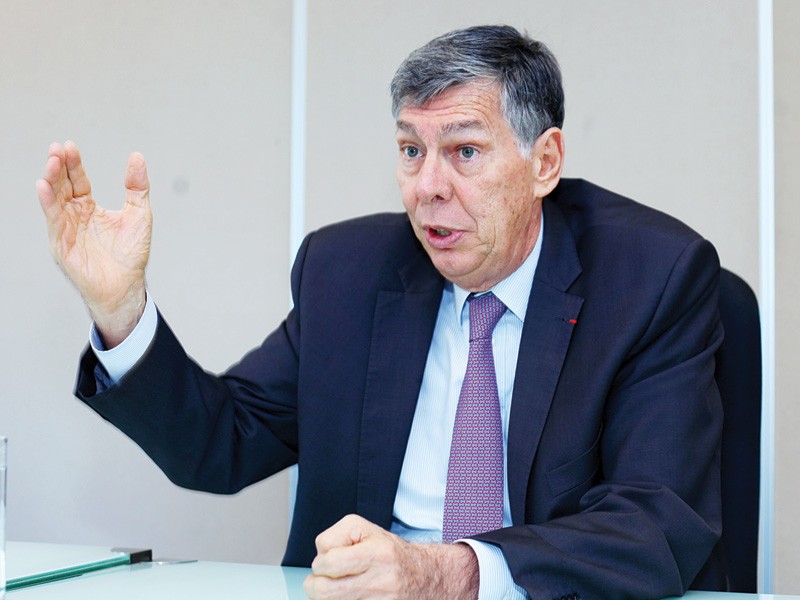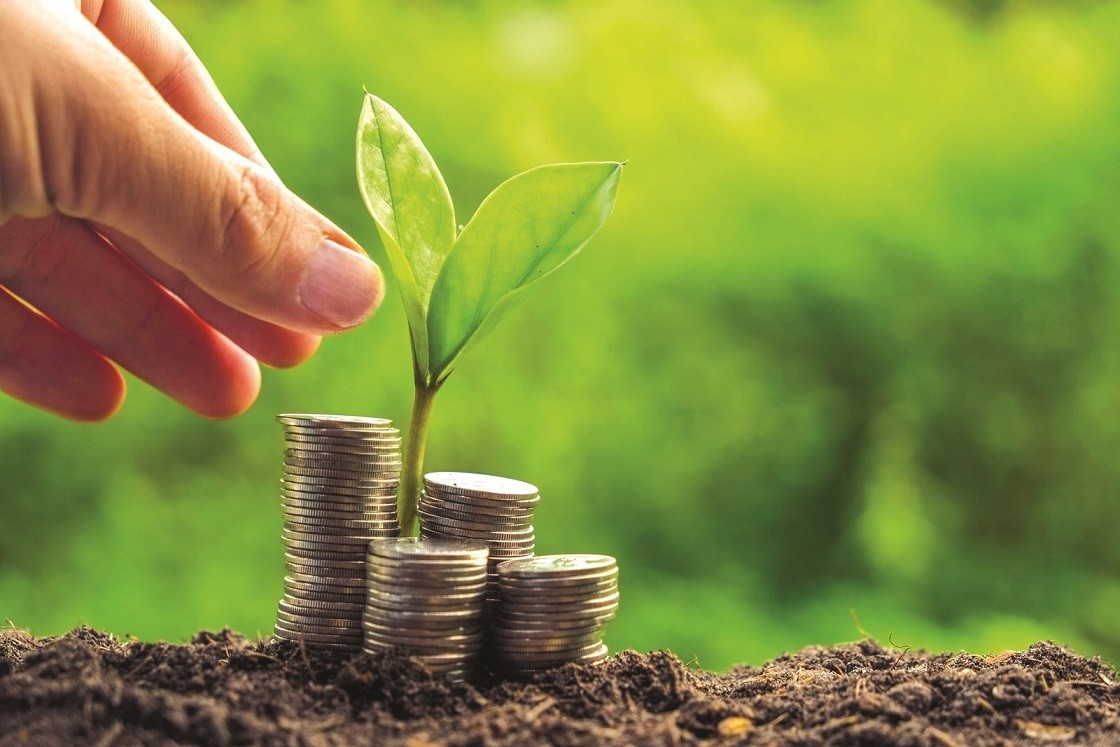
Two-year implementation of EVFTA: A mutual win-win for Vietnam and the EU
Latest
Chairman of the European Chamber of Commerce in Vietnam (EuroCham) Alain Cany shared with the World and Vietnam Report (WVR) on what Vietnam and the European Union (EU) have achieved after two years of implementing the EU- Vietnam Free Trade Agreement (EVFTA).
 |
| Chairman of the European Chamber of Commerce in Vietnam (EuroCham) Alain Cany. |
August 1, 2022 marks the two-year anniversary of the implementation of the "historic agreement" EVFTA. How do you evaluate the outcomes that this agreement brings to the EU and Vietnam?
Despite my satisfaction with the strengthening of Europe-Vietnam economic ties, the full effects of the EVFTA will take time to assess due to the economic instability caused by the pandemic and the conflict in Ukraine. Regardless, the agreement has provided numerous benefits since it went into effect.
Trade relations between Vietnam and Europe are certainly strengthening. Both Europe and Vietnam have been increasing their exports to each other following the implementation of EVFTA. Trade flows will also likely increase because of EVFTA’s further tariff reductions.
Vietnam's exports to Europe are also diversifying. Export diversification and the production of high-value-added products for European consumers will help increase Vietnam's position in the global value chain.
More specifically, EVFTA’s impact has varied by sector. As a result of Europe and Vietnam's complementary economies, each can make the most of its strengths while importing its limitations. Through the EVFTA, barriers to this mutually beneficial trade have been reduced. Thus, the agreement has primarily benefited Europe's strong industries, such as high-tech, high-quality goods that are not yet widely produced in Vietnam. The list includes products such as industrial equipment, green technology, and medicine. Vietnam's biggest beneficiaries have been the agricultural sector, textiles, raw materials, and electronics, such as computers, phones, and electronic components.
Are there any challenges for both the EU and Vietnam in this agreement?
EuroCham's quarterly Business Climate Index (BCI) surveys our members about Vietnam's business climate, including their concerns regarding the EVFTA's implementation.
In the latest BCI, administrative procedures were identified as the greatest barrier to trade, indicating that European companies have significant difficulties dealing with Vietnam’s administrative processes.
The second biggest barrier was a lack of understanding of the agreement. Resolving this problem requires educating domestic and international firms about the benefits offered by EVFTA, as well as the requirements for utilising it.
For Vietnamese companies, European import regulations are quite complex. As a result, some Vietnamese companies and sectors have difficulty complying with the EVFTA and exporting to Europe. Some do not even consider exporting to Europe because of this. Seminars, training sessions, and other educational tools can address this issue.
| To continue this positive path and attract more FDI, Vietnam must adopt a forward-looking approach and take the lead in Southeast Asia's green transformation. The development of green technology, infrastructure, and jobs will not only make Vietnam more attractive to European investors but will also serve as a basis for future growth. |
The EVFTA's stringent rules of origin also limit Vietnamese exports to the EU. Inputs from third countries hurt Vietnamese products' competitiveness in Europe and prevent them from taking advantage of tariff exemptions. The long-term development of domestic inputs and commodity supplies can help solve this.
What do European businesses want in the Vietnamese market?
In addition to providing European firms with many advantages when relocating from China or diversifying supply chains through a China+1 strategy, Vietnam offers much more than just investment relocation opportunities.
Due to its large, young, and energetic workforce, Vietnam provides a reliable and cost-effective labour force with the capacity to manufacture a broad range of products. As Vietnam's manufacturing diversifies and human resource capacity improves, the potential of this large labour force will be enhanced more and more.
The country's geographical location is also a huge advantage, providing easy access to East and Southeast Asia. In addition to easily being able to access some of the most dynamic consumer markets in the world, businesses in Vietnam can also conveniently import inputs from China and take advantage of the region’s shipping routes.
Since Vietnam is a stable country, investors can be confident that their investments will be protected from sudden economic or political changes. The Vietnamese Government has managed to make the economy stronger after the COVID-19 pandemic and has kept inflation low despite external challenges. This is important and has led to increased investor confidence as a result.
What do Vietnam and the EU need to do to take full advantage of the benefits that EVFTA brings?
Although EVFTA has benefited trade, it has not been as effective at attracting FDI. To maximize EVFTA's benefits for investors, all EU Member States must ratify the EU-Vietnam Investment Protection Agreement (EVIPA). By establishing a clear legal framework, EVIPA will make investors more confident that their interests will be protected. Ultimately, this will allow Vietnam to move up the global value chain by facilitating the transfer of technology and knowledge from foreign companies.
The situation of Vietnam's human resources must also be improved. Vietnam has a large workforce but lacks the human capital to attract and retain high-quality industries. Work visa and work permit red tape should be reduced to attract skilled foreign talent. The know-how they possess could then be passed on to Vietnamese workers. Making the most of the country's demographic advantages also requires training and preparing workers for specialised jobs. This will lead to Vietnam moving further away from low-skilled manufacturing and offering its European trading partners more value-added products.
It is also necessary for Vietnam to reduce administrative difficulties. EVFTA usage and trade generally have been complicated by the country's legal documents and procedures. New digital technologies and procedures will reduce the cost, efficiency, and time of doing business.
 |
| Vietnam must adopt a forward-looking approach and take the lead in Southeast Asia's green transformation. (Photo: Tap chi Tai chinh) |
In 2022, foreign direct investment (FDI) inflows into Vietnam are expected to prosper again thanks to investment attraction policies and the reopening of the economy. How do you assess the opportunity to attract a new wave of FDI from European investors thanks to EVFTA?
This is a very likely scenario because it is a win-win for both Europe and Vietnam.
European firms are looking for markets that are reliable and dynamic. Vietnam offers that.
The Vietnamese government is committed to attracting foreign investment and improving the quality of its FDI. This will make it easier for the country to achieve high-income status by 2045. Due to Europe’s expertise in green, sustainable industries and high-tech manufacturing, European companies are well positioned to play a leading role in this process.
Both sides are clearly aligned.
To continue this positive path and attract more FDI, Vietnam must adopt a forward-looking approach and take the lead in Southeast Asia's green transformation. The development of green technology, infrastructure, and jobs will not only make Vietnam more attractive to European investors but will also serve as a basis for future growth.
To lend a hand to Vietnam as it continues to push this process forward, EuroCham will host GEFE 2022 (Green Economy Forum & Exhibition) from November 28 to 30 in Ho Chi Minh City. This event will bring together government officials, business leaders, academics, and students from Europe, Vietnam, and Southeast Asia to discuss, find, and implement green European solutions in Vietnam. It will enable sustainable development through the transfer of European technologies, funds, resources, and knowledge to Vietnamese firms to support Vietnam's COP26 commitments and National Green Growth Strategy.
With this type of initiative paired with strong government leadership, Vietnam can expect a boom in foreign investors.
In the turbulent global context, how will the EVFTA affect the recovery and development of Vietnam's economy?
Vietnam's development will be aided by the EVFTA in both the long- and short-term.
Since its implementation, the EVFTA has had a significant impact on bilateral trade. Increasing trade relations with Europe and strong export-driven growth will continue to push the Vietnamese economy forward. As the EVFTA will eventually eliminate nearly 99 percent of customs duties between the EU and Vietnam, this trend is likely to continue.
With the expansion of bilateral trade and the improvement of international branding by the Vietnamese government and companies, Vietnamese products will enjoy a stronger reputation abroad. This will assist Vietnam in ensuring the long-term well-being of its people by creating a more sustainable foundation for the country's future.













